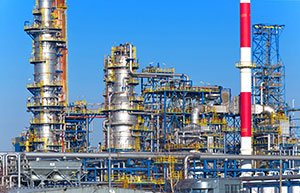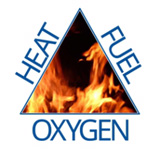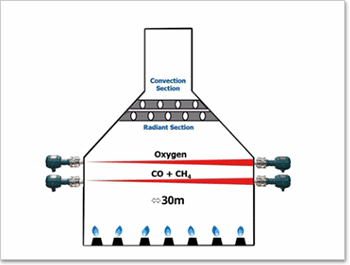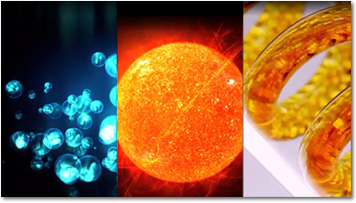การวัดในแหล่งกำเนิดเพื่อวัดเงื่อนไขกระบวนการด้วยความเร็วสูง
สเปกโตรมิเตอร์เลเซอร์ไดโอดแบบปรับได้ (TDLS) ช่วยให้สามารถวิเคราะห์ก๊าซแบบเรียลไทม์เพื่อเพิ่มประสิทธิภาพความปลอดภัยปริมาณงานคุณภาพและการปฏิบัติตามข้อกำหนดด้านสิ่งแวดล้อม เซ็นเซอร์แบบไม่สัมผัสช่วยให้สามารถตรวจวัดได้ภายใต้สภาวะที่รุนแรงเช่นอุณหภูมิสูงความดันสูงสภาวะที่มีฤทธิ์กัดกร่อน / การกัดกร่อนความเข้มข้นของฝุ่นสูงเป็นต้นการบำรุงรักษาสามารถทำได้โดยไม่ต้องใช้กระบวนการออฟไลน์เนื่องจาก TDLS ถูกแยกออกจากกระบวนการ TDLS เป็นเครื่องวิเคราะห์กระบวนการที่มีประสิทธิภาพซึ่งช่วยให้การทำงานมีเสถียรภาพและมีประสิทธิภาพ
>>> การประยุกต์ใช้งาน


- การวัดในแหล่งกำเนิดในสภาพแวดล้อมที่รุนแรง
- วัดได้ถึง 1500 ℃
- ความยาวเส้นทางแสงสูงสุด 30 ม
- เหมาะสมที่สุดสำหรับ การบูรณาการ SIS ผ่านการรับรอง SIL 2 และ 3
เพิ่มเวลาทำงานสูงสุดในกระบวนการเชิงรุก
หน่วยโรงงานและท่อต่างๆอาจมีก๊าซแรงดันอุณหภูมิสูงกัดกร่อนติดไฟและ / หรือเป็นพิษซึ่งอาจเป็นปัญหาสำหรับเทคโนโลยีแบบเดิม TDLS8000 สามารถตรวจจับความเข้มข้นของก๊าซในกระบวนการได้แบบเรียลไทม์โดยไม่ต้องสัมผัสโดยตรงเพื่อให้สามารถตอบสนองได้อย่างรวดเร็วเพื่อเพิ่มความพร้อมใช้งานของกระบวนการโดยไม่ต้องเสียสละความพร้อมในการวัด
>>> หลักการ
ปรับปรุง OPEX และความปลอดภัย
TDLS8000 ช่วยลด OPEX ทั้งหมดและเพิ่มผลผลิตสูงสุดอย่างปลอดภัย
ตัวอย่าง: TDLS8000 สามารถวัดได้ถึง 30 เมตรตลอดความยาวทั้งหมดของเตาเผาที่ด้านบนของส่วนการแผ่รังสีเพื่อวิเคราะห์การเผาไหม้ที่มีประสิทธิภาพ ขึ้นอยู่กับความเข้มข้นของก๊าซผู้ปฏิบัติงานสามารถปรับอัตราส่วนอากาศและเชื้อเพลิงให้เหมาะสมและวิเคราะห์ประสิทธิภาพการถ่ายเทความร้อนในขณะที่มั่นใจได้ว่ามีสภาพแวดล้อมที่ปลอดภัย
>>> แนวทางแก้ไข
>> เทคโนโลยี โยโกกาวา TDLS สามารถช่วยปรับปรุงความปลอดภัยในการปฏิบัติงานและการปล่อยมลพิษในหลากหลายอุตสาหกรรม <<
TDLS8000 ได้รับการออกแบบมาเพื่อช่วยให้ผู้ใช้มีคุณสมบัติตรงตามมาตรฐานการปฏิบัติงานที่หลากหลายและสามารถรวมเข้ากับแอปพลิเคชัน ระดับความปลอดภัย SIL2
>>> การปรับปรุงการดำเนินงาน

-
In-Situ Gas Analyzer TDLS8000
Yokogawa’s new TDLS™8000 houses all of the industry’s leading features in one robust device. The platform design is for in situ measurements which negate the need for sample extraction and conditioning.
-
Probe type Tunable Diode Laser Spectrometer TDLS8200
Sampling unnecessary, installation flange is only on one side, installation cost is reduced by half while keeping high speed measurement / high speed response. It can be easily exchanged from existing equipment.
-
High Sensitivity Laser Spectrometer TDLS5500
TDLS5500 เป็นอุปกรณ์คอมพิวเตอร์ที่วัดปริมาณก๊าซที่บรรจุอยู่ในกระบวนการแบบเรียลไทม์
Details
TDLS มีส่วนช่วยในการปรับปรุงงานของคุณ
คุณสมบัติของ TDLS Series

- การวัดออกซิเจนคาร์บอนมอนอกไซด์มีเทนแอมโมเนียความชื้นคาร์บอนไดออกไซด์และก๊าซอื่น ๆ ในไม่กี่วินาที
- ไม่จำเป็นต้องใช้อุปกรณ์สุ่มตัวอย่างสำหรับการวัดส่วนใหญ่ทำให้ไม่ต้องบำรุงรักษาส่วนใหญ่
- แพลตฟอร์ม TDLS กระบวนการเดียวที่สามารถวัดได้ถึง 30 เมตร
- การวัดสามารถทำได้ในสภาวะที่มีอุณหภูมิสูงความดันสูงกัดกร่อน / ขัดและฝุ่นสูงเนื่องจากเซ็นเซอร์ไม่สัมผัสกับก๊าซในกระบวนการ
- เหมาะอย่างยิ่งสำหรับการใช้งานที่สำคัญด้วยความเร็วในการตอบสนองที่รวดเร็วระดับ SIL
- เพิ่มประสิทธิภาพสูงสุดคำนึงถึงสิ่งแวดล้อมและลดการปล่อย CO, NOx และอื่น ๆ
จัดการกับเทคโนโลยีเดิม
ในโลกที่มีการพัฒนาอย่างต่อเนื่องในทิศทางของการเพิ่มประสิทธิภาพกระบวนการที่เพิ่มขึ้นในขณะที่ยังคงรักษาสถานะการทำงานที่ปลอดภัยการรักษาความได้เปรียบในการแข่งขันโดยไม่ใช้เทคนิคการวัดใหม่ ๆ เพื่อให้ทันสมัยอยู่เสมอ
>>> หลักการ
TDLS เป็นโซลูชันที่ปลอดภัยมีประสิทธิภาพและคุ้มค่า
แนวคิดพื้นฐานและการวัดของเครื่องวิเคราะห์ก๊าซด้วยเลเซอร์
หลักการวัดของเครื่องวิเคราะห์ก๊าซเลเซอร์
สเปกโตรมิเตอร์การดูดกลืนแสงเลเซอร์ไดโอดแบบปรับได้ (TDLAS) ทำงานโดยการวัดปริมาณแสงเลเซอร์ที่ถูกดูดซับเมื่อเดินทางผ่านก๊าซที่กำลังวัด เนื่องจากเซ็นเซอร์ไม่มีการสัมผัสกับกระบวนการและไม่มีชิ้นส่วนที่เคลื่อนไหวการบำรุงรักษาจึงลดลงซึ่งจะช่วยลดเวลาหยุดทำงานและลดต้นทุนระยะยาวในการเป็นเจ้าของ (LTCO)
การลดทอนเนื่องจากการดูดกลืน IR ถูกกำหนดโดย Lambert Beers'Law
กฎหมายของแลมเบิร์ตเบียร์


การดูดซึมของรังสี IR

การวัดที่เชื่อถือได้สูงในสภาวะไอน้ำที่แตกต่างกันเป็นไปได้เนื่องจากวิธีการวิเคราะห์สเปกตรัมที่เป็นเอกลักษณ์ของ Yokogawa
spectral area method ดั้งเดิมของ โยโกกาวา Electric แทบจะไม่ได้รับผลกระทบจากการแทรกแซงของก๊าซอื่น ๆ และสามารถวัดได้ด้วยความแม่นยำสูงด้วยอุณหภูมิและการชดเชยความดัน

เซลล์อ้างอิงอินทิกรัลยังคงรักษาความสมบูรณ์ของการวัดไว้แม้ในกระแสการดูดซึมต่ำ
การใช้เซลล์อ้างอิงช่วยให้ จุดสูงสุด ถูกล็อคระหว่างการวัดการติดตามเมื่อสัญญาณการดูดซับอ่อนแอ
สามารถเข้าถึงข้อมูลย้อนหลังสเปกตรัมและการเปลี่ยนแปลงการตั้งค่าทั้งหมดได้สูงสุด 50 วัน
ข้อมูลนี้มีประโยชน์สำหรับการแก้ไขปัญหากระบวนการจากระยะไกลเป็นเวลานานหลังจากเกิดความผิดพลาด
ความสามารถในการตรวจวัดที่เพิ่มขึ้นทำให้ผู้ใช้ของเราเพิ่มประสิทธิภาพในการทำงานได้อย่างปลอดภัยในขณะที่ลดการปล่อยมลพิษ
- ในการวิเคราะห์แหล่งกำเนิด
ปรับปรุงความปลอดภัยและความสามารถในการควบคุมกระบวนการเนื่องจากการตอบสนองแบบเรียลไทม์ - เลเซอร์ที่ปรับได้
ไม่มีชิ้นส่วนที่เคลื่อนไหวเพื่อให้ไม่มีวัสดุสิ้นเปลือง - เซ็นเซอร์แบบไม่สัมผัส
ทำงานในสภาพแวดล้อมที่รุนแรงและลดการบำรุงรักษา - เซ็นเซอร์ออปติคัลระยะไกล
หมายถึงกระบวนการทั้งหมดที่วัดได้ในขณะที่การวัดแบบแทรกหรือแบบแยกจะสะท้อนเฉพาะจุด
 TruePeak Tunable Diode Laser Spectrometers ทำงานโดยการวัดปริมาณแสงเลเซอร์ที่ถูกดูดซับขณะเดินทางผ่านก๊าซที่กำลังวัด การไม่มีเซ็นเซอร์สัมผัสกับกระบวนการและไม่มีชิ้นส่วนที่เคลื่อนไหวจึงทำให้เวลาเฉลี่ยสูงระหว่างความล้มเหลว (MTBF) และด้วยเหตุนี้ต้นทุนการเป็นเจ้าของในระยะยาวที่ต่ำ (LTCO)
TruePeak Tunable Diode Laser Spectrometers ทำงานโดยการวัดปริมาณแสงเลเซอร์ที่ถูกดูดซับขณะเดินทางผ่านก๊าซที่กำลังวัด การไม่มีเซ็นเซอร์สัมผัสกับกระบวนการและไม่มีชิ้นส่วนที่เคลื่อนไหวจึงทำให้เวลาเฉลี่ยสูงระหว่างความล้มเหลว (MTBF) และด้วยเหตุนี้ต้นทุนการเป็นเจ้าของในระยะยาวที่ต่ำ (LTCO)
เครื่องทำความร้อนแบบใช้ไฟเป็นส่วนสำคัญในกระบวนการอุตสาหกรรมรวมถึงกระบวนการผลิตไฮโดรคาร์บอนและการผลิตกระแสไฟฟ้า ได้รับการออกแบบมาโดยเฉพาะสำหรับปฏิกิริยาของเชื้อเพลิงและอากาศในการผลิตก๊าซที่มีอุณหภูมิสูงมากเครื่องทำความร้อนจะถ่ายเทพลังงานนี้ไปยังของเหลวในกระบวนการที่อาจติดไฟได้สูงผ่านเครื่องแลกเปลี่ยนความร้อน พวกเขาใช้เชื้อเพลิงในปริมาณมากปล่อยก๊าซจำนวนมากและเป็นอันตรายต่อความปลอดภัยต่อบุคลากรและโรงงาน
โยโกกาวา TDLS ช่วยควบคุมการเผาไหม้ของเครื่องทำความร้อนแบบใช้เชื้อเพลิงได้อย่างแม่นยำและเชื่อถือได้มากขึ้น มีรางวัลที่วัดได้สำหรับการใช้งานเครื่องทำความร้อนแบบใช้เชื้อเพลิงที่ระดับ Low Excess Air (LEA) ในการควบคุมการเผาไหม้ LEA จะมีการใช้เชื้อเพลิงในระดับต่ำสุดและผลิตภัณฑ์จากการเผาไหม้จะถูกระบายความร้อนให้น้อยที่สุดโดยอากาศส่วนเกินที่ไม่ได้ใช้
ผลประโยชน์ด้านต้นทุนของประสิทธิภาพเหล่านี้มีความสำคัญมากด้วยการประหยัดน้ำมันเพียงหนึ่งเปอร์เซ็นต์ทำให้ประหยัดเงินได้หลายหมื่นหรือหลายแสนดอลลาร์ต่อปี การควบคุมระดับอากาศเหนือจุดที่การเผาไหม้ไม่สมบูรณ์ยังช่วยให้ "การเผาไหม้ที่สะอาดที่สุด" ช่วยให้พืชมีคุณสมบัติในการปล่อยมลพิษต่อสิ่งแวดล้อม โดยเฉพาะอย่างยิ่งจะช่วยลดการปล่อย NOx
การเผาไหม้
การรักษา ประสิทธิผลเชิงปฏิบัติการ ในเตาเผาของคุณเพื่อเพิ่มปริมาณงานและลดการใช้เชื้อเพลิงให้น้อยที่สุดในขณะที่การทำงานอย่างปลอดภัยถือเป็นความท้าทายที่ยากอย่างแท้จริง
เทคโนโลยีการวิเคราะห์แบบเดิมเช่นการวัดเซอร์โคเนียและลูกปัดตัวเร่งปฏิกิริยาคือการวัดแบบจุดซึ่งไม่สามารถจับสิ่งที่เกิดขึ้นในเตาเผาของคุณได้อย่างสมบูรณ์ นอกจากจะเป็นแหล่งจุดระเบิดที่อาจเกิดขึ้นแล้วเซอร์โคเนียยังสามารถลดค่าการอ่านค่าได้เมื่อมีสารติดไฟ การวิเคราะห์ COE มีปัญหาในตัวเองเนื่องจากเวลาตอบสนองที่ยาวนานเป็นนาทีที่จำเป็นสำหรับระดับการพัฒนาโดยทั่วไปในพัน ppm ในส่วนการแผ่รังสีของสินทรัพย์ที่ถูกยิงและมักต้องใช้เซ็นเซอร์แยกต่างหากสำหรับการวัด CH4 ปัญหาดังกล่าวอาจส่งผลกระทบอย่างมากต่อความปลอดภัยในการใช้งานเตาเผาของคุณ
ผู้ดำเนินการหน่วยที่ทันสมัยต้องการเข้าถึงข้อมูลที่น่าเชื่อถือที่สุดที่มีอยู่เพื่อลดการเกิดสภาวะที่ไม่ปลอดภัยได้อย่างรวดเร็วหากพวกเขากำลังจะเพิ่มประสิทธิภาพของสินทรัพย์
การเปิดตัวเทคโนโลยี Tunable Diode Laser Spectrometer (TDLS) ของ Yokogawa ช่วยให้สามารถวัดค่าออกซิเจนและ CO แบบเรียลไทม์ในแหล่งกำเนิดได้อย่างแม่นยำเชื่อถือได้และแม่นยำเพื่อเพิ่มประสิทธิภาพสูงสุด
ถือเป็นความก้าวหน้าครั้งสำคัญในการสนับสนุนสิ่งอำนวยความสะดวกทั้งหมดในการดำเนินงานสินทรัพย์อย่างปลอดภัยและมีประสิทธิภาพ

คุณสมบัติและข้อดีของเทคโนโลยี TDLS โยโกกาวา
- ข้อมูลเรียลไทม์สำหรับการควบคุม
ประสิทธิภาพได้รับการขยายสูงสุดเนื่องจากปรับปรุงประสิทธิภาพการทำงานและการปล่อยมลพิษอย่างปลอดภัยเนื่องจากอัตราส่วนอากาศ / เชื้อเพลิงจะได้รับการปรับให้เหมาะสมเสมอ - การวิเคราะห์ด้วยเลเซอร์
เทคโนโลยีใหม่นี้ช่วยให้สามารถใช้แนวทางปฏิบัติที่ดีที่สุดในอุตสาหกรรมได้ - เซ็นเซอร์แบบไม่สัมผัส
ทำงานในสภาพแวดล้อมที่รุนแรงและลดการบำรุงรักษา - เซ็นเซอร์ออปติคอลทางยาว
การวัดค่าเฉลี่ยทางยาวช่วยขจัดจุดร้อนจึงช่วยให้ท่อแลกเปลี่ยนความร้อนมีอายุการใช้งานยาวนาน (ลดต้นทุนให้น้อยที่สุด)
ความปลอดภัย / กระบวนการ
เมื่อต้องทำความเข้าใจกับสิ่งที่เกิดขึ้นในเตาเผาของคุณการพึ่งพาเอาท์พุทข้อมูลที่ จำกัด จากเทคโนโลยีเครื่องวิเคราะห์ทั่วไปทำให้เกิดความรับผิดชอบมากขึ้นในทักษะของผู้ปฏิบัติงาน
เทคโนโลยี TDLS ช่วยลดภาระด้านความสามารถของผู้ปฏิบัติงานและโอกาสในการเกิดข้อผิดพลาดจากมนุษย์โดยการส่งข้อมูลที่น่าเชื่อถือที่สุดในเตาเผาทั้งหมดโดยเร็วที่สุดเพื่อประสิทธิภาพและความปลอดภัยของสินทรัพย์ที่ดีที่สุด
คุณจำเป็นต้องมีความสามารถในการตรวจจับวัดและควบคุม LOC (การ จำกัด ความเข้มข้นของออกซิเจน) เพื่อความปลอดภัยของสถานที่และเพื่อนร่วมงานของคุณ

ความปลอดภัยในการปฏิบัติงานของลูกค้าและประสิทธิภาพในการดำเนินงานทำให้เราสามารถลดต้นทุนการดำเนินงานและลดการปล่อย CO 2 และ NOx
แหล่งข้อมูล
Storage tanks are used in a variety of industries ranging from holding crude oil to holding feedstock for vinyl chloride monomer (VCM).
In maintaining and managing industrial plants, monitoring waste water pH/ORP is both a legal obligation and an unavoidable necessity for protecting the environment. Monitoring without an attentive eye can lead to severe consequences.
Electrolysis plants create hydrogen and chlorine from a brine solution. Chlorine gas generated from the anolyte of the electrolysis tank generally contains between 0.5 to 2.0 vol% H2O. The sample is then cooled and filtered to remove brine, subsequently coming out as wet chlorine gas. The wet gas is sent to a drying tower where it is treated with sulfuric acid to get moisture down to the ppm level.
Considering safety and environmental issues such as combustion efficiency and decreasing NOX and CO in exhaust gas, it has become important to control O2 concentration in garbage incineration processes.
In recent years, shale gas extraction technology has made rapid progress, inducing a shale gas revolution mainly in the USA. Thus, the need for analysis of hydrocarbon gases, including natural gas, is expected to grow rapidly. Traditionally gas chromatography has been used for the analysis of hydrocarbon gases; it can accurately measure the concentration of each hydrocarbon component in a sample of natural gas.
Spectrometric technology can assess many critical characteristics about products, but it has limits. It can be challenging to determine when the line has been crossed
With fired heaters, users hope to get greater efficiency and reduced emissions but often are disappointed. Given the number of fired heaters operating every day and their importance in the process industries, any improvements realized across the board will have huge impacts. More units can reach their potential with some simple changes in work practices and technology upgrades.
The EPA rule, 40 CFR 63 Subparts CC and UUU, is forcing refineries to monitor flares. Fortunately, modern analyzer technology makes it possible to meet the requirements, generate the necessary reports, and stay in compliance.
Here’s how to select the right analyzer to meet these demands.
Downloads
News
-
Press Release | Solutions & Products Apr 6, 2021 Yokogawa Adds TDLS8200 Probe Type Tunable Diode Laser Spectrometer to Its OpreX Analyzer Lineup
- Simultaneous measurement of oxygen, carbon monoxide, and methane concentrations for optimum combustion control in heating furnaces -
Looking for more information on our people, technology and solutions?
Contact Us








